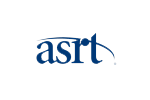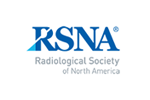What is the radiology community doing to appropriately manage radiation exposure?
Medical imaging offers tremendous benefits in the care of patients. While there is arguably some potential risk from radiation, this risk—if it exists—is so small that it is difficult to prove. The suspected risk is partly based on projections from the incidence of induced cancer in large populations of people exposed to radiation levels far higher than those encountered in diagnostic imaging. What we do know is that even small potential risks can be further reduced by reducing exposure to radiation. The medical profession is working hard to ensure that patients are given appropriate imaging tests that use as little radiation as possible.
What is the radiology profession doing to minimize the risks to patients?
Several things:
-
 Medical imaging and radiation therapy professionals recognize the importance of keeping the radiation dose to their patients as low as necessary, while still using an adequate amount to ensure they obtain a diagnostic quality image. The practice of minimizing radiation exposure to patients, medical workers, and others has become standard in radiology practices.
Medical imaging and radiation therapy professionals recognize the importance of keeping the radiation dose to their patients as low as necessary, while still using an adequate amount to ensure they obtain a diagnostic quality image. The practice of minimizing radiation exposure to patients, medical workers, and others has become standard in radiology practices. - A meeting of prominent radiologists, medical physicists and other members of the radiology community convened in 2006 to address the growth of exposure to radiation in medical imaging and to suggest methods for managing the risks to patients. The panel's public white paper was published in 2007 and updated in 2010.
- Image Gently® is a collaborative initiative of radiology professional organizations (as well as other groups and individuals). Its goal is to change radiology practice by increasing the awareness of opportunities for lowering radiation dose when imaging children.
-
 Image Wisely® is an awareness campaign with the goals of eliminating unnecessary imaging exams and lowering doses in those exams that are necessary.
Image Wisely® is an awareness campaign with the goals of eliminating unnecessary imaging exams and lowering doses in those exams that are necessary. - Accreditation programs, such as those offered by the American College of Radiology (ACR), accredit facilities that have established their imaging competence. Imaging competence means the facility adheres to guidelines, utilizes personnel with appropriate qualifications, and demonstrates their awareness of the need for ongoing quality control involving their equipment and personnel. Facilities seeking accreditation for imaging procedures that use ionizing radiation must demonstrate that their doses do not exceed established levels.
- Appropriateness Criteria®, developed by the ACR, are designed to assist referring physicians and radiologists in prescribing the best radiology examination for their patients based on symptoms and circumstances. Each option displays the relative radiation level associated with the procedure being considered. This helps to reduce the number of examinations by assuring that the most suitable exam is done first.
- A Dose Index Registry is available to CT facilities nationwide. It is a repository of dose-related information that can provide facilities a mechanism for comparing their exams to those of other facilities, nationally, regionally, and locally. By comparing themselves to others, facilities can determine if the radiation dose from their procedures is within appropriate ranges.
 The American Board of Radiology requires that certified radiologists be familiar with radiation safety issues. Radiation management is a component of their board certifying examinations. The Board has also included a similar section in the maintenance of certification criteria for radiologists who have been initially certified; material includes opportunities for self-assessment as well as practice quality improvement in radiation protection. This means that ongoing education in radiation management is required for Board Certified medical imaging professionals.
The American Board of Radiology requires that certified radiologists be familiar with radiation safety issues. Radiation management is a component of their board certifying examinations. The Board has also included a similar section in the maintenance of certification criteria for radiologists who have been initially certified; material includes opportunities for self-assessment as well as practice quality improvement in radiation protection. This means that ongoing education in radiation management is required for Board Certified medical imaging professionals.
Certified radiologic technologists, nuclear medicine technologists and radiation therapists receive extensive education in radiation safety and protection during their education. They are tested on these subjects during their certification examinations. In addition, many states that license medical imaging professionals require them to earn continuing education credits in radiation safety topics.- The radiological profession is working with manufacturers to improve the performance of their radiology equipment and monitor radiation usage so that physicians can determine in real time whether their radiation levels are acceptable. Manufacturers have also started to broadcast information on how to use their equipment most effectively through public media sites such as Image Wisely®.
- The federal government, through agencies such as the U.S. Food and Drug Administration and Centers for Medicare and Medicaid Services, has an impact on radiology safety. For instance, the government requires safety features for equipment and facility accreditation before providing monetary reimbursement of Medicare and Medicaid patient claims. Radiologists and technologists, through their professional societies, cooperate with these agencies in their efforts.
This page was reviewed on June 07, 2024



